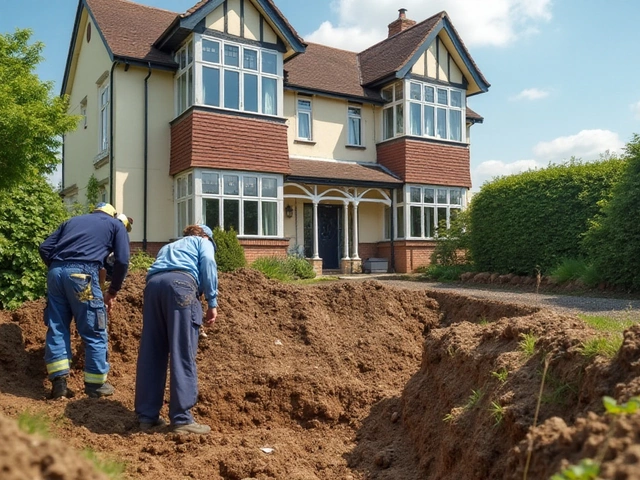Building Mold: What It Is and Why It Shows Up in New Construction
If you’ve just moved into a fresh‑built house and see dark spots on walls or a musty smell, you’re likely dealing with building mold. Mold loves moisture, and new builds often have hidden sources of dampness that homeowners don’t think about. The good news? Most mold problems can be stopped early with a few practical steps, and fixing them doesn’t have to break the bank.
Top Reasons Mold Starts Growing in New Builds
First, the concrete slab or foundation may not have fully cured before interior finishes went on. That traps moisture inside walls, giving mold a perfect breeding ground. Second, poor ventilation in bathrooms, kitchens, and utility rooms lets humid air sit, especially during winter when windows stay closed. Third, using wet‑sealant or paint on walls before the substrate is dry locks in water. Finally, cheap or inappropriate insulation can hold moisture against structural timber, creating a slow‑burn environment for spores.
Simple Steps to Keep Building Mold at Bay
Start by checking that all crawl spaces and basements have a working dehumidifier or proper vent fans. Run a fan for at least 15 minutes after showering or cooking to push humid air outside. Inspect external walls for gaps around windows, doors, and flashing – seal any leaks with quality caulk. When you notice a damp spot, dry it within 24‑48 hours; a quick towel or a portable heater can do the trick. If mold has already taken hold, scrub the area with a mixture of water and dish soap, then rinse and dry thoroughly.
Choosing the right building materials makes a big difference, too. Opt for mold‑resistant drywall, especially in high‑humidity zones, and pick paints labeled “mildewcide” for extra protection. When possible, let concrete cure for at least 28 days before covering it with flooring or wallboard. If you’re uncertain about moisture levels, rent a cheap moisture meter and scan walls before you finish any interior work.
Regular maintenance also helps. Clean bathroom tiles and grout with a vinegar solution once a month to prevent mold from forming in the first place. Check your roof and gutters for clogs; standing water on the roof can seep down into walls during a rainstorm. Lastly, keep an eye on indoor humidity – aim for 30‑50 % year‑round. A simple digital hygrometer tells you when to run a dehumidifier or open a window.
If you do find a sizable mold patch (larger than a few square feet), it’s wise to call a professional. They have the equipment to contain spores, safely remove contaminated material, and treat the area so it doesn’t come back. Most small‑scale DIY fixes are safe, but larger infestations can affect indoor air quality and even health.
Bottom line: building mold isn’t inevitable, even in brand‑new homes. By drying out moisture sources, improving ventilation, and picking mold‑resistant materials, you can keep your house fresh, healthy, and free of those unsightly spots. Stay proactive, check regularly, and enjoy a clean indoor environment for years to come.
Understanding Mold-Related Health Risks in New Buildings

This article explores the potential health risks associated with mold exposure in new building constructions. It delves into how mold can develop even in newly built structures, the common health symptoms that can arise, and the measures you can take to protect yourself. We provide a practical guide on prevention and detection methods to ensure that new buildings remain safe and healthy environments.
read more



